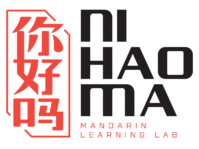IIntroducing children to Chinese at an early age not only expands their language abilities but also equips them with a powerful tool for the future. However, finding the right learning resources, especially when it comes to Chinese books for kids, can be a real challenge for many parents. In this blog post, we’ll explore why learning Chinese early is so beneficial and recommend the Top 5 Chinese textbooks for kids that are currently rated among the best.
Why Should Kids Learn Chinese Early?
In today’s world, foreign language proficiency is no longer just a nice-to-have — it’s an essential skill for global integration and holistic development. While English remains a popular choice, Chinese is rapidly gaining traction as one of the world’s most widely spoken and influential languages. More and more parents are choosing to introduce Chinese books for kids as part of their child’s early education. But what exactly are the benefits?
The Golden Age of Language Learning
According to a research by MIT, the best age to learn a new language and reach near-native fluency is before the age of 10. During this period, children’s brains are highly adaptable, making it easier for them to absorb sounds, tones, and pronunciation. Starting with Chinese books for kids at a young age not only makes it easier to master correct pronunciation and tones but also helps develop language skills naturally — without the constraints of rigid grammar rules that often come with learning later in life.
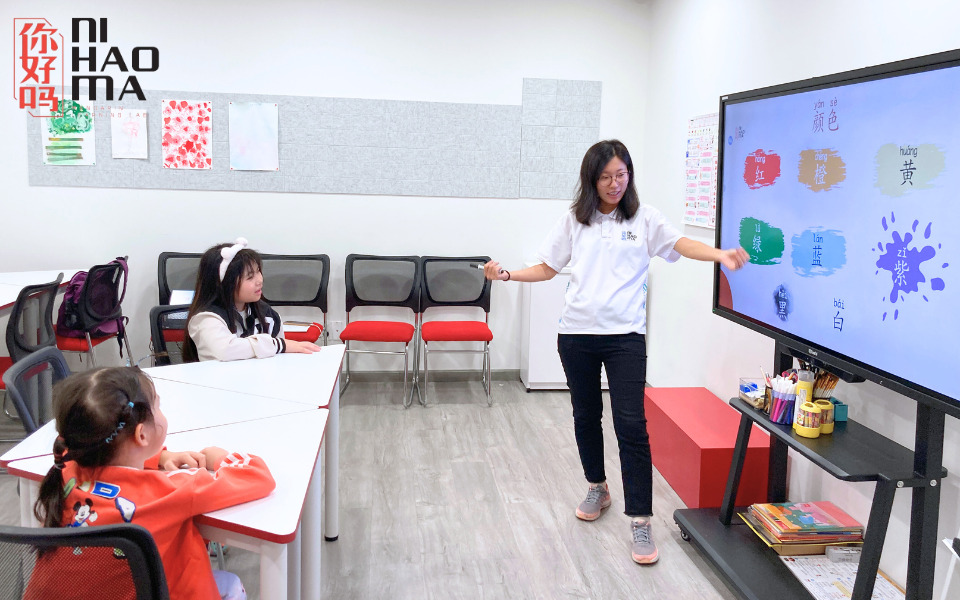
Expanding Future Academic and Career Opportunities
Chinese is spoken by over 1.4 billion people and is the official language in several economically powerful countries and regions. As China continues to be one of Vietnam’s largest trade partners, knowing Chinese can open up doors to scholarships, international education, job opportunities, and cross-border collaborations. Children who grow up with a strong foundation in Chinese will be far better positioned for success than those who begin learning later in life.
Boosting Memory and Logical Thinking
Learning Chinese involves more than just vocabulary and grammar — it requires understanding a completely different writing system. Reading and writing Chinese characters enhances children’s memory, concentration, and attention to detail. Recognizing radicals and stroke patterns in Chinese characters also helps develop logical reasoning and analytical thinking — key elements of cognitive development in young learners.
Cultivating Global Cultural Awareness
Learning Chinese also introduces children to one of the world’s oldest and richest cultures. Through Chinese books for kids, children can explore Chinese calligraphy, food, literature, philosophy, and history. Early exposure to Chinese customs, traditions, myths, and cultural values fosters open-mindedness and respect for diversity — qualities essential for thriving in a multicultural world.
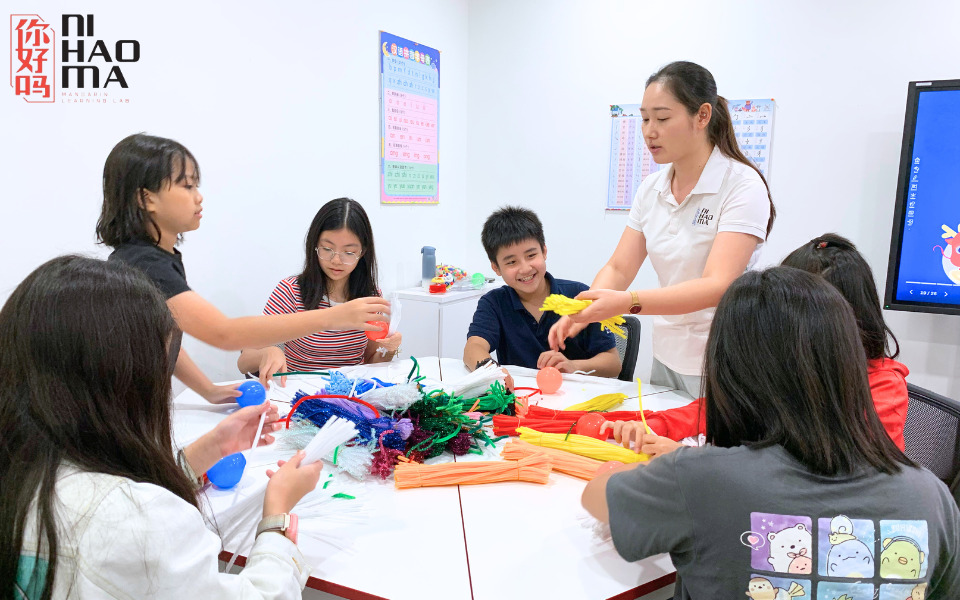
Building Confidence and Soft Skills
Children who learn a second language early are more confident in communication and quicker in response — especially in multicultural environments. Chinese language classes often include interactive activities, group work, and games that help children develop essential soft skills such as communication, teamwork, problem-solving, and critical thinking. These skills will greatly benefit their academic journey and future life experiences.
Top 5 Best Chinese Books for Kids
The market is flooded with dozens of Chinese books for kids, each with its own strengths and weaknesses. So which ones are truly worth your investment? Here’s a top recommendation:
1. IchiLand Chinese for Kids
IchiLand is an educational ecosystem designed specifically for kids aged 6–15, developed by iLanguage Vietnam and led by Ms. Phan Thi Thu — a certified Chinese teaching expert with an international TPA certificate from Beijing. As of July 2023, IchiLand officially released a full Chinese textbook series tailored to Vietnamese children. This marks a major milestone in how Chinese is taught to kids in Vietnam.
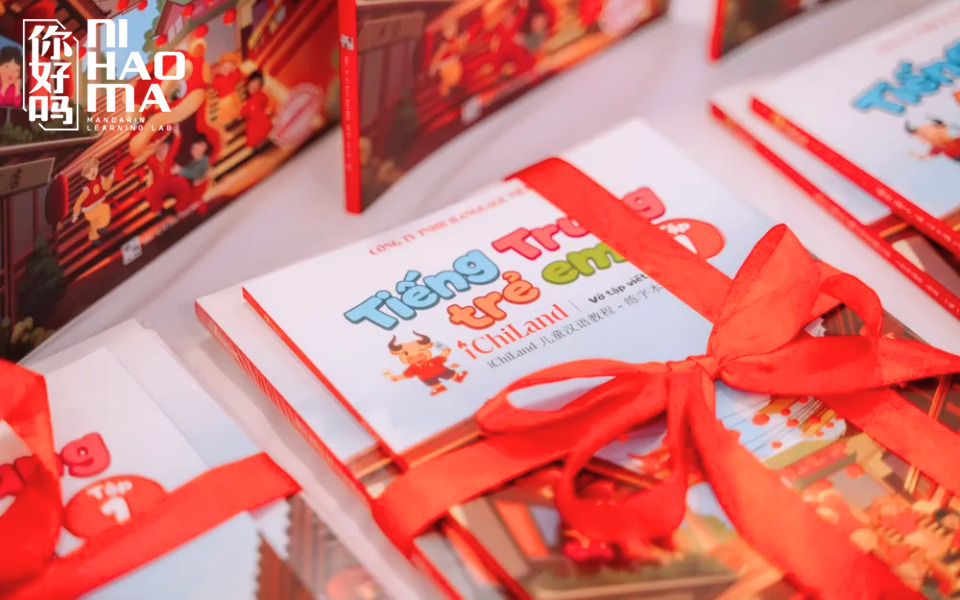
A complete IchiLand set includes:
- Student Book: Engaging themes such as self-introduction, family, school, hobbies, time, weather, dreams, and career orientation.
- Workbook: Reinforces key concepts and language skills.
- Writing Practice Book: Helps children practice stroke order and recognize Chinese characters.
- Flashcards: Colorful and fun cards that support vocabulary retention through games.
- Audio Files: Improve listening and pronunciation skills.
IchiLand goes beyond being just a textbook series — it’s a comprehensive learning solution. With internationally aligned methods, age-appropriate content, and a strong focus on engagement, IchiLand helps spark a love for the Chinese language right from the start. It’s an ideal choice for parents seeking a strong, well-rounded language foundation for their kids, promoting both intellectual growth and self-confidence.
2. “Hello Chinese” by MCBooks
When it comes to Chinese books for kids, the “Hello Chinese” series by MCBooks stands out as an excellent option for young learners. As one of Vietnam’s leading foreign language publishers, MCBooks has officially launched this engaging curriculum tailored specifically for children. The series is a licensed and translated version of the well-known “Hello Chinese” textbooks originally published by the Chinese Language Education Publishing House.
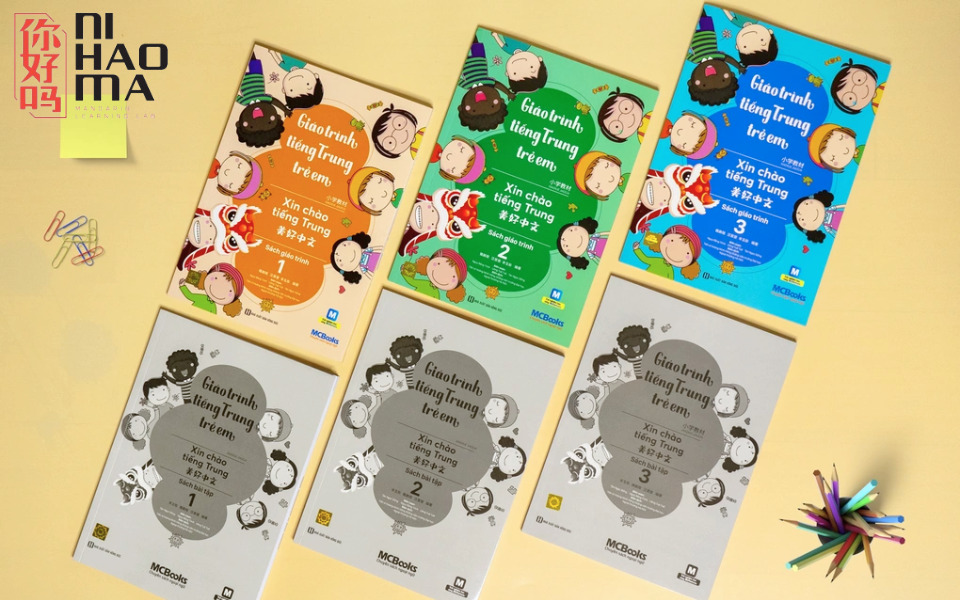
Designed with young learners in mind, this Chinese learning series aims to introduce children to the language in a natural, enjoyable, and effective way from an early age. The complete set includes 6 books — 3 student textbooks and 3 corresponding workbooks. The content is carefully structured around five core pillars: Communication, Culture, Connection, Comparison, and Community.
Each textbook contains 10 comprehensive lessons, systematically presenting knowledge in a child-friendly format. By the end of the series, children will have the necessary language skills to take the Youth Chinese Test (YCT), and their proficiency will be on par with HSK Levels 1 and 2 — a strong foundation for future learning.
3. YCT Chinese Textbooks for Children
If you’re searching for Chinese books for kids that offer a structured, exam-oriented approach, the YCT Chinese Textbook Series is definitely worth considering. Specifically developed for primary and middle school students, this curriculum not only builds Chinese language proficiency but also prepares learners for the Youth Chinese Test (YCT) — an international standardized exam.
The YCT (Youth Chinese Test) is designed by Hanban (Confucius Institute Headquarters/China’s National Office for Teaching Chinese as a Foreign Language) to assess Chinese proficiency in young learners between the ages of 6 and 15. The textbook series was created to align closely with the format and content of the actual YCT exam, providing students with a clear learning roadmap and well-targeted preparation.
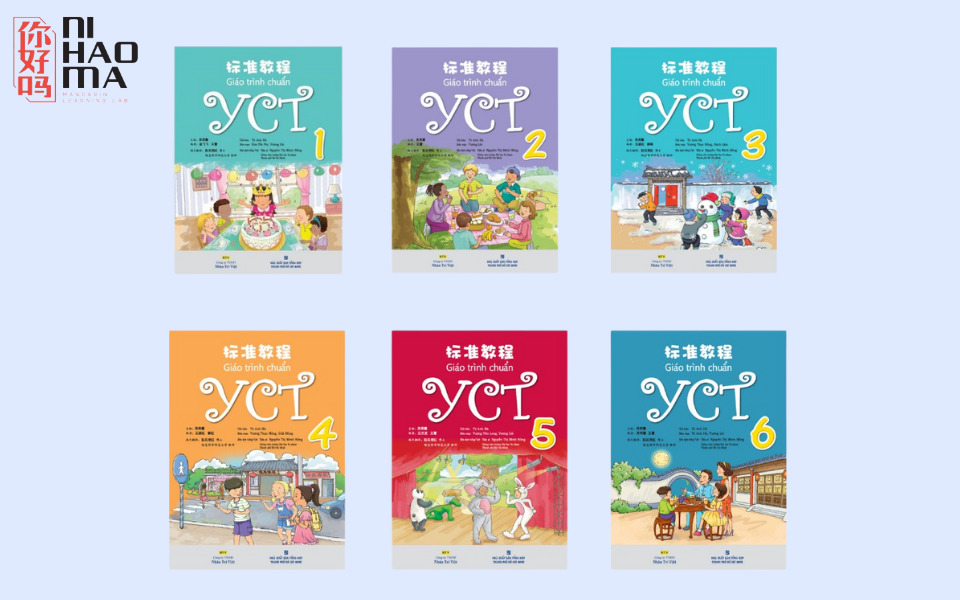
The series is divided into levels from YCT 1 to YCT 4, covering everything from beginner to intermediate stages. Each level has specific learning objectives for vocabulary, grammar, and communication skills. What makes these Chinese books for kids especially effective is their direct alignment with the YCT exam framework. The practice exercises are modeled after real test formats, helping students become familiar with exam-style questions, build confidence, and steadily work toward earning their YCT certificates.
4. Easy Steps to Chinese
When it comes to Chinese books for kids, Easy Steps to Chinese is one of the most popular and well-structured choices. Written by Yamin Ma and Xinying Li, this textbook series is specially designed for children from preschool age through grade 4. It focuses on building a strong foundation in Mandarin through fun, visual, and interactive lessons that keep young learners engaged.
One of the biggest strengths of this series is its vibrant and child-friendly design. The lessons are thoughtfully crafted to match the interests and cognitive level of young children. Topics such as self-introduction, family, numbers, colors, and hobbies are all closely tied to kids’ daily lives, helping them connect with the language naturally and apply it in real-life conversations with ease.
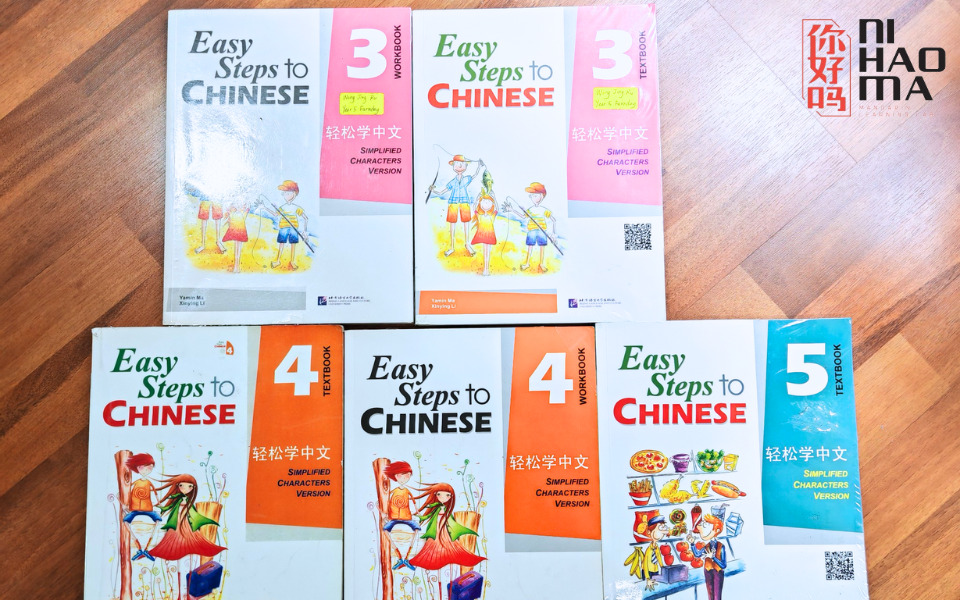
In addition to the main textbook, Easy Steps to Chinese for Kids also comes with a wide variety of supplementary exercises — including word matching, sentence building, drawing activities, listening comprehension, writing practice, and more. These activities offer a well-rounded approach to language development, strengthening both comprehension and communication skills.
However, it’s important to note that this series is written entirely in English and simplified Chinese, which might be a challenge for non-English-speaking learners, such as Vietnamese children, without adult guidance.
5. Tiếng Hoa Dành Cho Trẻ Em
Another excellent choice in the realm of Chinese books for kids is Tiếng Hoa Dành Cho Trẻ Em (Chinese for Children). This is a beginner-level textbook series tailored for young children, especially those who are either about to enter school or just starting to learn Mandarin, whether living in Vietnam or abroad. The series is divided into three volumes, each containing twenty well-structured lessons.
The first volume focuses on helping kids master pronunciation using a variety of speaking and listening techniques. As the series progresses, volumes two and three shift towards simple sentence patterns and everyday communication. These books are carefully designed to gradually develop a child’s ability to understand and speak Chinese confidently.
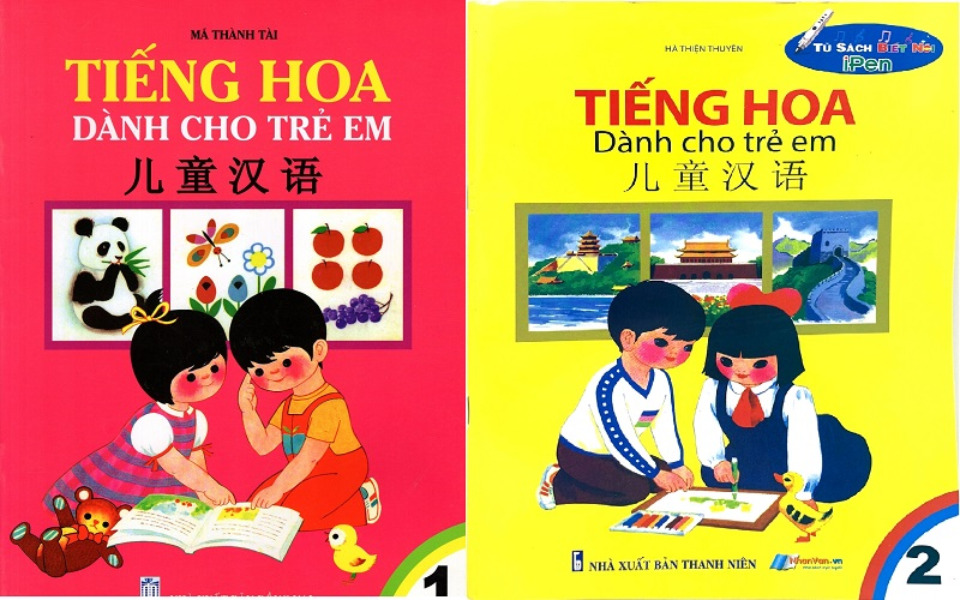
Each volume also includes useful teacher’s notes and appendices, making it a valuable resource for parents and educators alike. The topics covered in the lessons are selected to be relevant and interesting to children — using vocabulary and scenarios they encounter in everyday life. What truly sets this series apart is its colorful illustrations and engaging layout, which turn learning Chinese into a joyful and exciting discovery process.
Important Tips for Teaching Chinese to Children
When it comes to teaching Chinese to children, choosing the right textbook or Chinese books for kids is just the beginning. To truly make learning effective—and enjoyable—for young learners, there are several key factors parents and teachers should keep in mind:
- Learn Through Play: Children learn best through play. Traditional book-based methods alone can quickly become dull, leading to boredom and loss of interest. Instead, try weaving Chinese into fun activities such as games, songs, storytelling, role-playing, coloring, and puzzles. These interactive experiences make language learning feel natural and enjoyable, rather than forced.
- Don’t Pressure Kids for Immediate Results: Language acquisition varies greatly from child to child. Some may pick up new sounds and characters quickly, while others need more time to get used to tones, pronunciation, or unfamiliar Chinese characters (Hanzi). Avoid focusing too much on test scores or expecting children to speak fluently right away. Too much pressure can lead to anxiety and loss of confidence, which often slows down progress.
- Use a Variety of Methods: One common mistake when teaching Chinese to kids is relying solely on textbooks. Young learners need multi-sensory stimulation—visual, auditory, and emotional. Supplement Chinese books for kids with cartoons in Mandarin (with subtitles), bilingual comics, picture books, and interactive games. The more engaging and diverse the materials, the more likely children will stay motivated.
- Connect Learning to Real Life: Children grasp language more effectively when it relates to their everyday experiences. Instead of limiting Chinese learning to answering textbook questions, use real-life scenarios. For example, during mealtime, teach your child the Chinese names of the foods they’re eating. This helps reinforce vocabulary in a meaningful and memorable way.
- Encourage and Reward: Positive reinforcement plays a big role in maintaining a child’s enthusiasm for learning. Rewards don’t need to be expensive—what matters is helping your child feel that their effort is recognized. A simple sticker, a high-five, or a kind word can motivate them to take initiative and enjoy the learning process rather than feel forced into it.
Conclusion
Choosing the right Chinese books for kids is a vital first step in laying a strong foundation for your child’s language skills, cognitive development, and communication abilities. Each learning resource has its own strengths, so consider your child’s age, proficiency level, and interests when selecting materials. Most importantly, remember that the effectiveness of any book depends greatly on how it’s used—through flexible teaching methods, a positive learning environment, and active involvement from parents or teachers.
If you’re looking for a well-structured Chinese course designed specifically for kids, Ni Hao Ma is an excellent option. With a team of experienced teachers, a “learn through play” approach, and engaging learning tools like flashcards, interactive videos, comics, and games, Ni Hao Ma helps children absorb the language naturally while building solid skills in listening, speaking, reading, and writing. Reach out via our fanpage or hotline to get started today!
